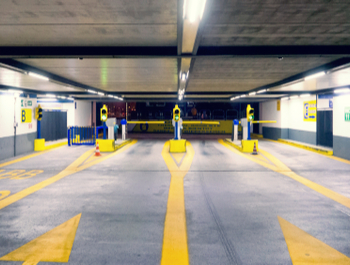Sightseeing Tours
Tbilisi is the capital and the largest city of Georgia. The city covers area of 726 km2 on the both sides of Mtkvari river and has the population of 1.480.000 people (2006 census). Founded in the 5th century AD by Vakhtang Gorgasali, the Georgian King of Kartli (Iberia) and made into a capital in the 6th century, Tbilisi is a significant industrial, social, and cultural center. Tbilisi is 400 m above sea level and several interesting places include:
Places to visit in Tbilisi :
- The Holy Trinity Cathedral commonly known as Sameba is the main Georgian Orthodox Christian cathedral, located in Tbilisi. Constructed between 1995 and 2004, it is the largest religious building in the Caucasus and the third-tallest Orthodox Cathedral in the World.
The Sameba Cathedral is erected on the Elia Hill, which rises above the left bank of the Kura River (Mtkvari) in the historic neighborhood of Avlabari in Old Tbilisi.
The Cathedral represents the synthesis of traditional styles dominating the Georgian church architecture at various stages of its history, but also contains several innovations.
The Sameba Cathedral is a cruciform church crowned with a dome over a crossing, which rests upon eight columns and creates the center. At the same time, the parameters of the dome is independent from the apses, imparting a more monumental look to the dome and the church in general. The dome is surmounted by a 7.5 meter-high cross covered with gold.
The Cathedral consists of nine chapels (chapels of the Archangels, John the Baptist, Saint Nino, Saint George, Saint Nicholas, the Twelve Apostles, and of the All Saints), five of them situated in a large underground compartment. The overall area of the cathedral, including a large narthex, is 5,000 square meters and the volume it occupies is 137 cubic meters. The inner perimeter of the church is 56 m × 44 m. The space totals 2,380 square meters. The height of the cathedral from the ground to the top of the cross is 84 meters. The underground chapel occupies 35,550 cubic meters. The height is 13 meters.
- Old Tbilisi - is an administrative district in Tbilisi, although the term "Old Tbilisi" has long been used to denote a historical part of the city, it was only in 2007 that it became a distinct administrative entity to incorporate several historical neighborhoods formerly included in the districts of Mtatsminda-Krtsanisi, Isani-Samgori, and Didube-Chughureti.
Old Tbilisi is principally centered on what is commonly referred to as the Tbilisi Historic District, which, due to its significant architectural and urban value, as well as the threat to its survival, was previously listed on the World Monuments Watch (1998, 2000, 2002).
The district is located on the both sides of the Mtkvari River and is dominated by Mount Mtatsminda, Narikala fortress and the Kartlis Deda monument. It chiefly represents a 19th-century urban fabric with largely eclectic architecture which includes the buildings and structures from the 5th to the 20th century. However, most of the pre-19th century city did not survive due to the devastating Persian invasion of 1795. The district houses a bulk of the tourist attractions in Tbilisi, including churches, museums, sulphur bathhouses, and peculiar wooden houses with open, carved balconies. In the 19th century, the core territory of the modern-day district of Old Tbilisi was tentatively subdivided into ethnic neighborhoods such as Avlabari with its Armenian and Georgian quarters on the left bank of the Kura River and the Persian Quarter (Said-Abad) on the right bank of the Kura River.
- Metechi church of Holy Virgin - built in 5th century and rebuilt in 13th century. Royal palace was situated here before moving to Narikala Castle. Metechi is a central-domed church.
- Sulfur baths - favorite place of Tbilisi citizens and foreign guests.
- Sioni Cathedral - was initially built in the 6 th-7th centuries. Since then, it has been destroyed by foreign invaders and reconstructed by Georgians several times. The current church is based on a 13th century version with some changes from the 17th to the 19th centuries.
- Caravansary - Merchants oriental style building of 19th c, was restored in 1984 to ethnographical museum.
- Narikala Fortress - exists in Tbilisi since the middle of the 4th century. It was occupied by Iranian, North Caucasian and Byzantine, Arab conquerors in various periods of time. Royal palace was also resided here. Church of St. Nickoloz was built within the castle in 13th century. It was rebuilt in the latter half of 20th century.
- Anchiskhati church - that represents basilica and bell tower dated 6th - 18th cc is one of the most ancient church & building in Tbilisi.
- Mamadaviti (Father David’s) monastery - Architectural and artistic symbol of Tbilisi, with the church of Father David located on The Mtatsminda Mount (in translation – Holy Mount). It is named after St. Father David Garejian, who was one of those Assyrian Fathers, who came to Georgia in 6th century to strengthen Christianity. The church was built in 6th century. Nowadays a pantheon of famous Georgian writers and public figures is also situated here.
- Tbilisi State Museum named after Simon Janashia – Georgia’s cultural treasure is exhibited here. Homo georgicus is a species of hominine that was suggested in 2002 to describe fossil skulls and jaws found in Dmanisi, Georgia in 1999 and 2001, which seem intermediate between Homo habilis and H. erectus. A partial skeleton was discovered in 2001. The fossils are about 1.8 million years old. The remains were first discovered in 1991 by Georgian scientist, David Lordkipanidze, accompanied by an international team which unearthed the hominin remains. Implements and animal bones were found alongside the ancient hominine remains.
- Open Air Ethnographic Museum – on this place there are built all kinds of Georgian national old country-houses and castles
- Ethnographical museum under open air - more than 70 dwellings from 10 distinct regions of Georgia and more than 7,000 artifacts. The houses have been moved piece by piece from their native villages.
- Sharden Street is one of the most fashionable points of Tbilisi. Various sorts of events often take place here. It is the spot where the fancy restaurants, café-bars are located. This spot features the best galleries and souvenir shops, where something interesting is always found for everybody and especially for the visitors.
Useful Information

Flight Information
Real-time information of arrival and departure flights at Tbilisi Airport

Parking
Your way to a secure parking space! Benefit from the attractive online parking offers of Tbilisi Airport

Shopping & Dining
See the full range of shops in our shopping universe. At the airport you'll find a great selection of shops within fashion, electronics, design and souvenirs
Frequently Asked Questions
Phone: +955 32 310 345 / +995 32 310 467